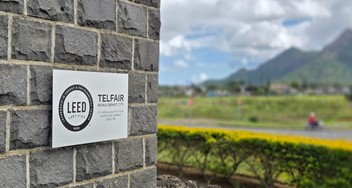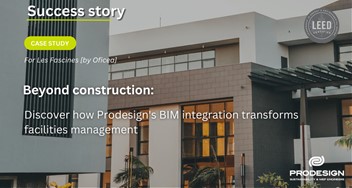The role of BIM in the Telfair North project
As the BIM Manager, Prodesign took the helm in steering the project towards completion. The implementation of BIM was not just a technological adoption but a paradigm shift in how the comprehensive project was designed, managed, and executed.
Strategic planning and execution with BIM
From the outset, a Building Execution Plan (BEP) was meticulously prepared. This plan was pivotal in establishing the level of detail and development expected from each party involved, including contractors and sub-contractors. By setting these standards, the BIM Manager ensured that all stakeholders had a clear understanding of their roles and responsibilities, thereby streamlining the workflow and minimizing discrepancies.
Fostering collaboration through Common Data Environment (CDE)
In a project of this magnitude, coordinating over 200 participants is a daunting task. The deployment of a Common Data Environment (CDE) was a game-changer. It not only brought everyone onto a single platform but also facilitated seamless collaboration. The custom workflows developed by the BIM Managers were crucial in managing this complex process. These workflows ensured the timely provision of information, efficient approvals, and stringent quality control on site, ultimately leading to a more synchronized construction process.
Harnessing OpenBIM for seamless integration
The project's commitment to openBIM workflow was evident in the collaborative efforts of the multidisciplinary team. By sharing BIM models in IFC format, stakeholders, regardless of their proprietary software (Autodesk Revit and Archicad), could work cohesively. This approach was instrumental in achieving accurate energy modeling, ensuring that sustainability objectives were ingrained in every aspect of the project. The use of parametric modeling and performance analysis tools for early-stage sustainability analyses and energy modeling allowed stakeholders to prioritize low-carbon alternatives, significantly reducing the building's environmental impact.
Innovative approach to clash detection
One of the most significant advantages of BIM in this project was the implementation of an advanced clash resolution workflow. This system allowed for automated clash detection, identifying potential issues in mere minutes. The clashes were categorized according to the BEP and assigned to relevant parties for resolution. This proactive approach was key in preventing costly rework, wastage, and delays during construction, underscoring the cost-saving potential of BIM.
Quality assurance and control
Another area where BIM added immense value was quality assurance and control. The construction teams leveraged BIM, in conjunction with the CDE mobile app, to ensure compliance with the specified tolerances, dimensions, and material specifications during site visits. Deviations from the design or quality standards were meticulously documented as non-compliances on the platform, complete with annotated images and notes. This streamlined documentation process during quality assurance ensured that any issues raised were effectively addressed through corrective actions.
Impact on energy and cost efficiency
The Telfair North project's use of BIM significantly enhanced energy and cost efficiency. The early-stage energy modeling and sustainability analysis enabled the design team to integrate energy-efficient solutions from the project's inception. This strategic planning resulted in a design that not only meets current energy standards but also sets a new benchmark for sustainable building design.
Moreover, the reduced need for rework and the optimized use of materials, owing to the effective clash detection and resolution process, led to significant cost savings. The project demonstrated that early identification and resolution of design conflicts can have a profound impact on the overall budget and timeline of a construction project.
Conclusion
The Telfair North project is a testament to the transformative power of BIM in the construction industry. Oficea [an ENL Brand] appointed Prodesign as BIM Manager, who successfully navigated the complexities of this large-scale development, showcasing how BIM can be leveraged to enhance collaboration, improve efficiency, and ensure sustainability in construction projects. The project not only achieved its design and construction goals but also sets a new standard in building efficiency and sustainability, paving the way for future developments in the industry.







